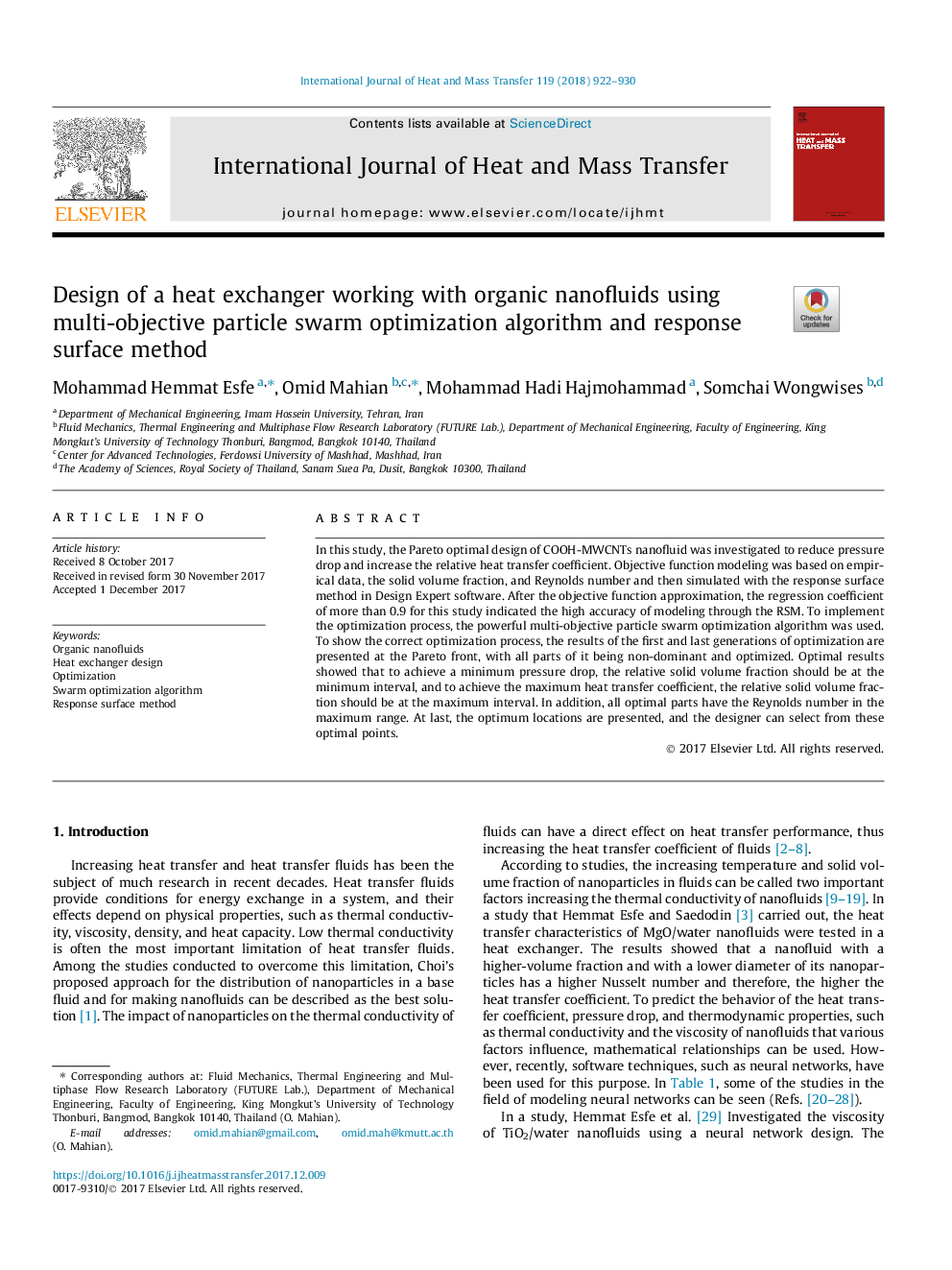| Article ID | Journal | Published Year | Pages | File Type |
|---|---|---|---|---|
| 7054772 | International Journal of Heat and Mass Transfer | 2018 | 9 Pages |
Abstract
In this study, the Pareto optimal design of COOH-MWCNTs nanofluid was investigated to reduce pressure drop and increase the relative heat transfer coefficient. Objective function modeling was based on empirical data, the solid volume fraction, and Reynolds number and then simulated with the response surface method in Design Expert software. After the objective function approximation, the regression coefficient of more than 0.9 for this study indicated the high accuracy of modeling through the RSM. To implement the optimization process, the powerful multi-objective particle swarm optimization algorithm was used. To show the correct optimization process, the results of the first and last generations of optimization are presented at the Pareto front, with all parts of it being non-dominant and optimized. Optimal results showed that to achieve a minimum pressure drop, the relative solid volume fraction should be at the minimum interval, and to achieve the maximum heat transfer coefficient, the relative solid volume fraction should be at the maximum interval. In addition, all optimal parts have the Reynolds number in the maximum range. At last, the optimum locations are presented, and the designer can select from these optimal points.
Related Topics
Physical Sciences and Engineering
Chemical Engineering
Fluid Flow and Transfer Processes
Authors
Mohammad Hemmat Esfe, Omid Mahian, Mohammad Hadi Hajmohammad, Somchai Wongwises,
